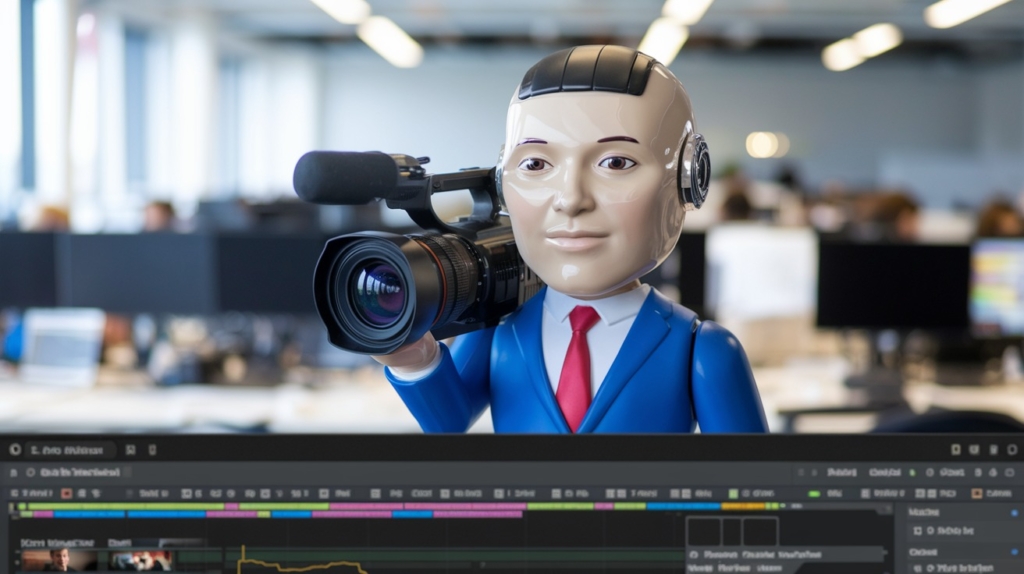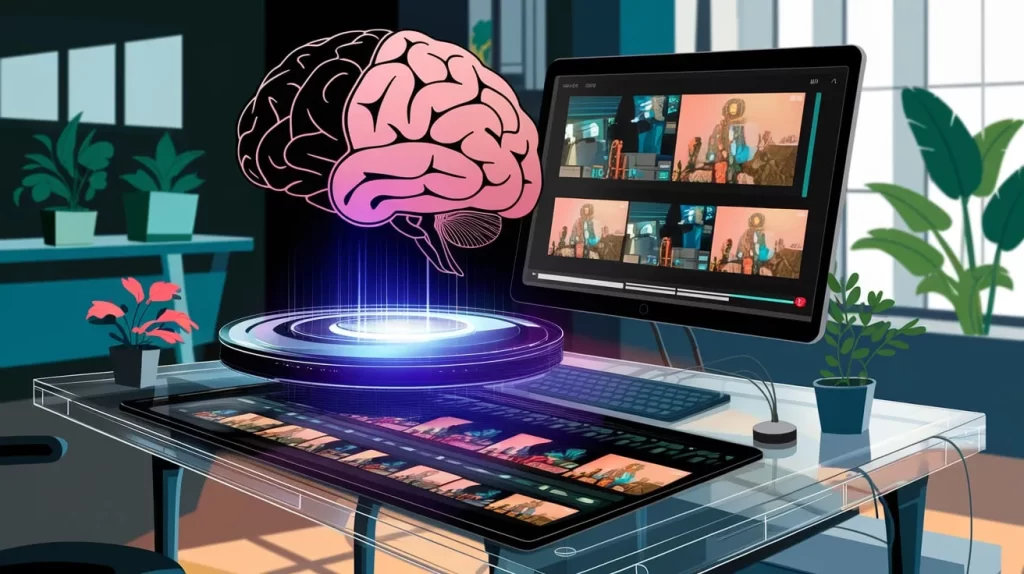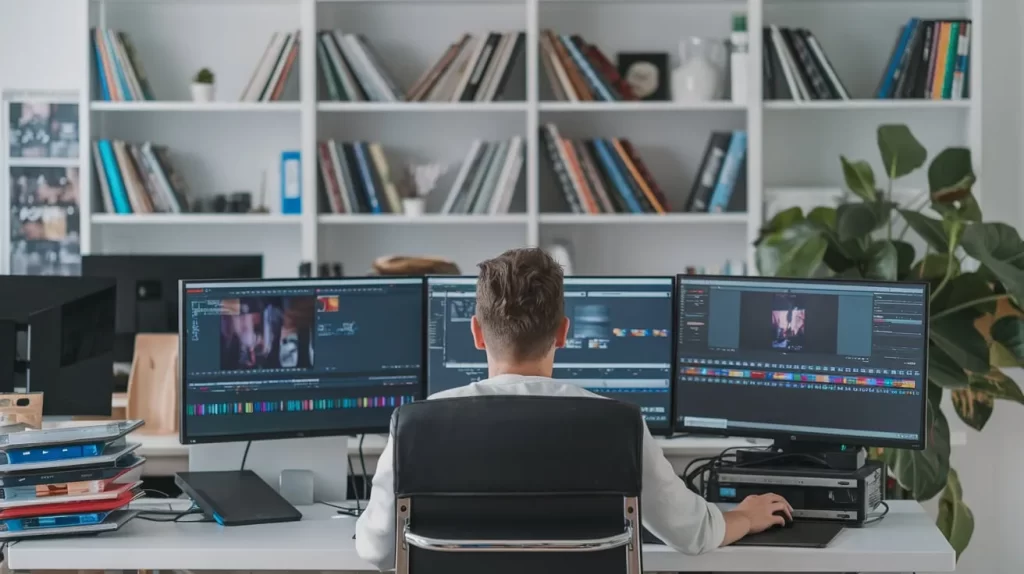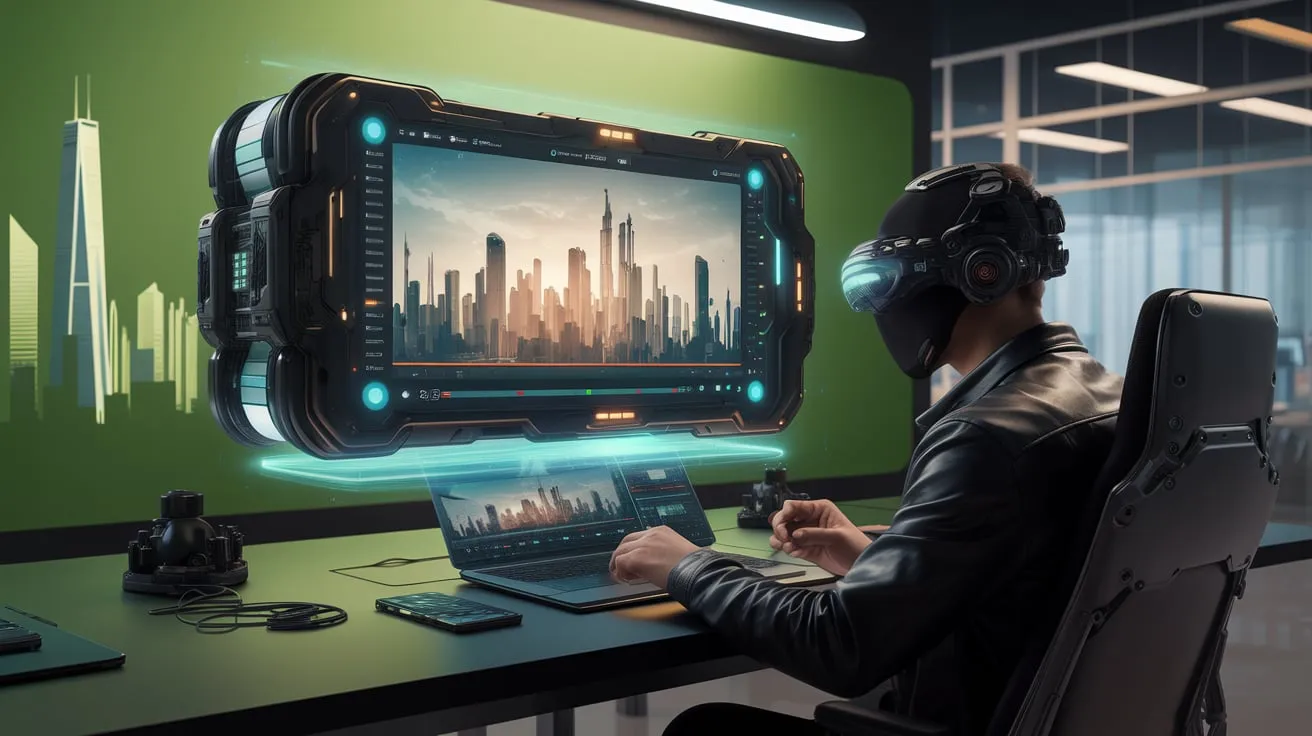Video editing has come a long way from the early days of film reels and analog splicing. What once required painstaking manual effort is now an art and science powered by cutting-edge technology. As we look ahead, the future of video editing services is poised for major transformations, driven by emerging trends in Artificial Intelligence (AI), Virtual Reality (VR), and Augmented Reality (AR). But what exactly does the future hold for video editing, and how can professionals and creators stay ahead of the curve? This article will explore these advancements, offering insights into the direction video editing is headed and how to adapt to new trends.

Suggested Posts:
- Types of Video Editing Services
- High-Quality Video Editing Services
- Understanding Video Editing Service Costs
Emerging Trends in Video Editing
The evolution of video editing has been nothing short of revolutionary, and we’re only scratching the surface of what’s possible. From AI-powered tools to immersive VR experiences, the future of video editing services is all about speed, efficiency, and creative possibilities.
AI Tools and Automation in Video Editing
One of the most exciting trends in video editing is the rise of AI tools and automation. Traditionally, video editing has been a labor-intensive process that requires a great deal of time and expertise. However, AI is changing the game by automating tasks that would otherwise take hours, if not days, to complete.
AI-powered video editing tools can automatically identify and cut the most relevant scenes, adjust lighting, color grade footage, and even remove background noise. For example, Adobe Premiere Pro’s AI tool, Adobe Sensei, can auto-reframe footage to fit different aspect ratios, allowing content creators to produce videos optimized for multiple platforms without re-editing the footage manually. These tools are especially beneficial for high-volume content creators like social media influencers, digital marketers, and businesses that need to produce large amounts of content on tight deadlines.
Another exciting use of AI is its ability to predict the most engaging content. By analyzing viewer behavior and interactions with your content, AI can suggest edits or tweaks that could increase engagement, giving video creators an edge in the highly competitive world of digital content.

Virtual Reality (VR) and Augmented Reality (AR) in Video Content
As immersive technologies like VR and AR continue to evolve, their role in video editing is becoming more significant. VR and AR are not just changing how videos are created but also how audiences experience them. This is particularly relevant in fields like gaming, training simulations, and real estate, where immersive video experiences are becoming the norm rather than the exception.
For example, AR allows video editors to add virtual objects into live footage in a seamless, interactive way. This is becoming particularly popular in the marketing and advertising sectors, where brands want to create engaging and interactive ads that can be accessed via smartphones or AR glasses.
On the VR side, video editors are increasingly working with 360-degree videos that allow users to experience a fully immersive world. Whether for gaming, education, or entertainment, VR is allowing content creators to push the boundaries of what’s possible in video production. VR video editing services are becoming an essential part of creating rich, fully immersive experiences that can be viewed in headsets or even projected into physical spaces.
The Rise of Automation and Real-Time Editing
Another aspect of the future of video editing involves real-time editing, where changes can be made instantly during the filming process. This trend is being accelerated by AI and machine learning, which are making it possible to edit footage in real time without the need for post-production. This not only speeds up the editing process but also opens up new creative possibilities for directors and editors to work together, making adjustments on the fly.
The ability to apply effects, transitions, and color grading in real time is particularly useful in live streaming and events like concerts or sports broadcasts, where immediate edits are needed to keep the content flowing smoothly. Live video editing software, combined with AI, allows for an enhanced, dynamic viewing experience without the usual delays in post-production.
Suggested Posts:
- Future of Video Editing Services
- Ultimate Guide to Video Editing Services
- Types of Video Editing Services

How to Stay Ahead with the Best Video Editing Services
Staying ahead of the curve in the ever-evolving world of video editing requires a combination of adapting to new tools, understanding emerging trends, and continually refining your creative process. Here are some ways to stay at the forefront of the industry.
Keeping Up with the Latest Software and Technology for Editing
Video editing software is constantly evolving, and it’s important to keep your toolkit up to date. Today, software like Final Cut Pro, Adobe Premiere Pro, and DaVinci Resolve offer advanced features such as AI-driven editing, real-time rendering, and collaborative tools that make it easier to work with teams. As new versions of these programs are released, they often include new features powered by machine learning, virtual production tools, and enhanced AR/VR capabilities.
Investing in the latest technology is an investment in the future of your editing projects. Cloud-based tools are also gaining popularity, allowing for seamless collaboration and editing across different platforms and locations. For video editing services that require high-quality output, having access to the latest software can significantly reduce editing times while improving the quality of your content.
The Role of Creativity and Technical Skills in Shaping the Future of Video Content
While new tools and technology make editing easier and faster, the future of video editing will still be shaped by the creativity and technical expertise of editors. The best video editors are those who can combine their technical skills with an artistic vision, understanding how to tell a story visually and emotionally.
Creativity will always be at the heart of great video editing. Editors will need to adapt to the evolving tools available to them, but they will also need to continue developing their own unique editing style to make videos stand out in an increasingly saturated market.
Furthermore, technical skills such as sound design, color grading, and motion graphics are becoming more important. As the technology around us becomes more sophisticated, so too must the skills of the editors. The future of video editing will require editors to stay adaptable, constantly learning new techniques, and exploring how emerging technologies can elevate their work.
FAQs
What are the emerging trends in video editing?
The most prominent emerging trends in video editing include AI tools, real-time editing, and the integration of AR/VR technologies in video content creation.
How is AI changing the video editing landscape?
AI is streamlining video editing by automating time-consuming tasks like scene recognition, color correction, and audio adjustment. It can also suggest creative edits based on audience engagement data.
What role do VR and AR play in video editing?
VR and AR are transforming video content by enabling immersive, interactive experiences. Editors can use these technologies to create 360-degree videos and add virtual elements to real-world footage.
How can I stay ahead in the future of video editing?
Stay up-to-date with the latest software and tools, continuously improve your technical and creative skills, and experiment with emerging technologies like AI, AR, and VR to enhance your video content.
Key Takeaways
The future of video editing services is an exciting blend of creativity and technology. With the rise of AI-powered tools, real-time editing, and immersive technologies like VR and AR, video editing is evolving faster than ever before. To stay ahead, editors must embrace these emerging trends and continue to develop both their technical and creative skills. The key to success in the future of video editing lies in blending innovation with artistic vision, ensuring that the content you create is not only technically impressive but also emotionally compelling.
- AI tools are revolutionizing the video editing industry by automating tasks and improving efficiency.
- VR and AR are creating immersive experiences that are transforming how video content is created and consumed.
- To stay ahead in video editing, it’s crucial to keep up with the latest software, adapt to emerging technologies, and maintain a high level of creativity.
